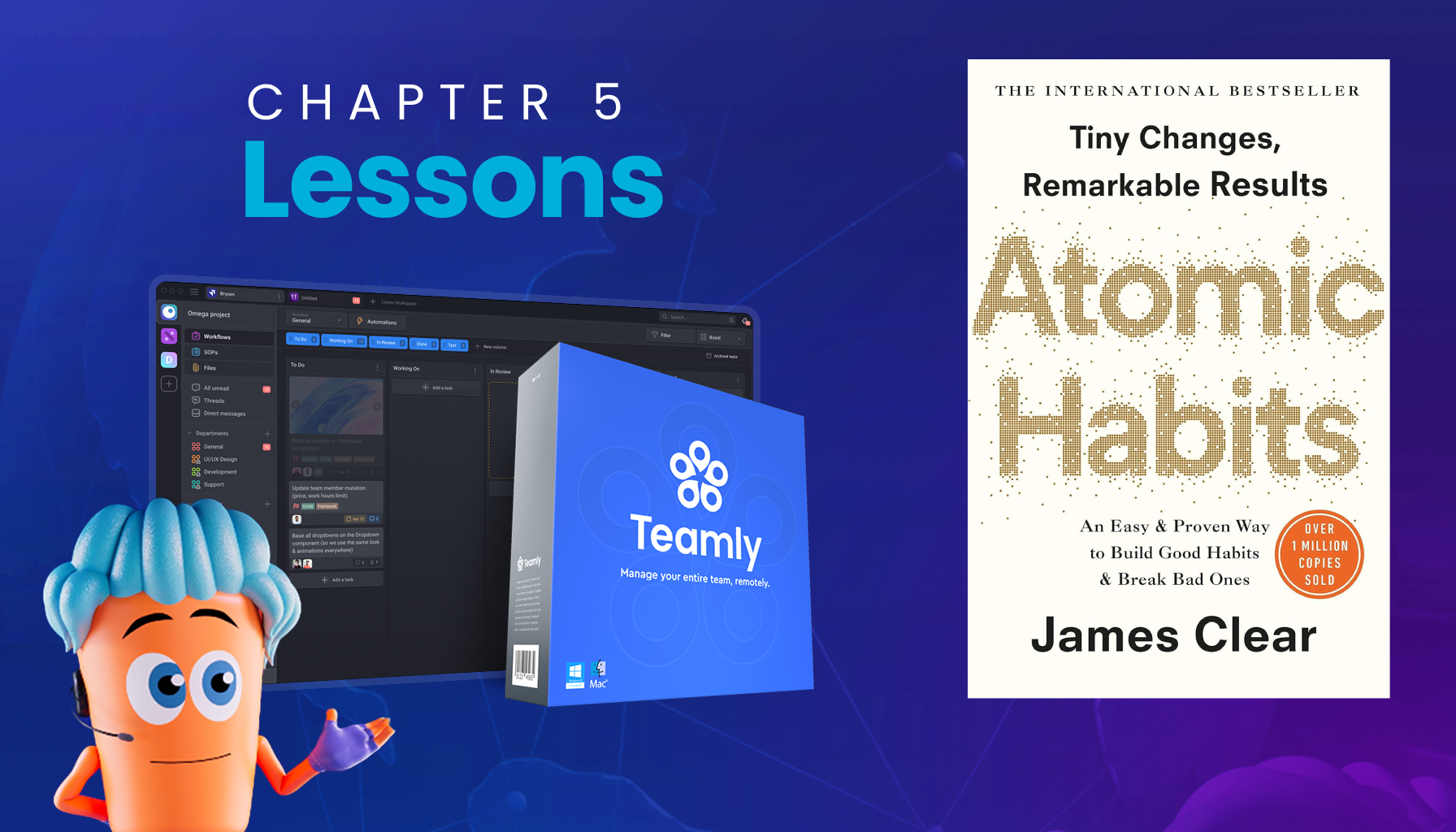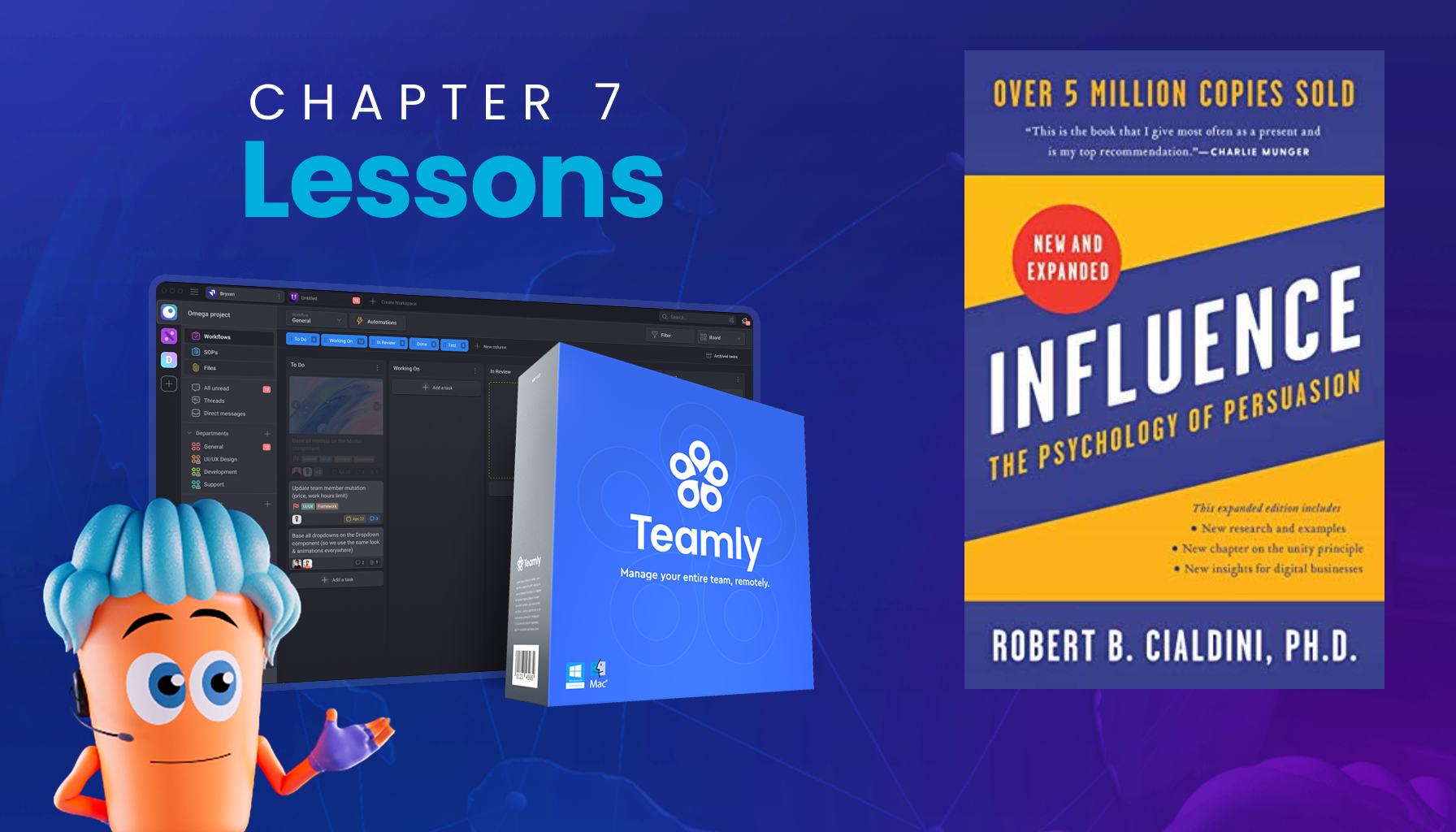
Click the button to start reading
Tackling Onboarding Challenges in Modern and Virtual Business in 2023
Imagine stepping into the shoes of a new hire.
The blend of excitement, curiosity, and a dash of nervousness.
Now, consider the role of the onboarding process in steering these emotions towards positive employee experiences and outcomes. The power of employee onboarding lies in the success of new employees becoming productive members of the wider team quickly and effectively.
It’s not just an administrative checklist but a strategic tool that can infuse new hires with a clear understanding of their role, assimilate them into the company’s culture and values, and build a sturdy bridge between their personal goals and the organization’s vision.
But the journey to creating an onboarding process is riddled with challenges, particularly in a dynamic and tech-driven business environment.
In this article, we will embark on a journey to unfold the multifaceted challenges accompanying the onboarding process. We will examine their implications and discuss actionable strategies to convert these obstacles into opportunities for enhancing your onboarding experience.

What Does Employee Onboarding Mean?
Employee onboarding is the process by which new hires get adjusted to the social and performance aspects of their jobs quickly and smoothly. It’s about familiarizing them with their new workplace environment, ensuring they understand their roles and responsibilities, and aligning them with the company’s culture and values.
Onboarding bridges the gap between the initial recruitment phase and full integration within the team and organization.
The endgame of an onboarding process isn’t merely administrative completion but a range of objectives aimed at shaping a successful employee journey:
- Role clarity: Equip new hires with a clear understanding of their job expectations, goals, and how their role intertwines with the company’s vision.
- Cultural assimilation: Foster a sense of belonging by acclimating new hires to the company’s culture, values, and work ethics.
- Establish connections: Facilitate relationship-building opportunities with colleagues and superiors to foster a supportive work environment.
- Enhance productivity: Accelerate the path to full productivity by providing the necessary tools, training, and resources.
- Encourage retention: Create a positive first impression to improve employee retention and loyalty.
In the traditional business landscape, onboarding was a predominantly face-to-face process, often involving a welcome session, a tour of the office, in-person training, and introductory meetings with the new team. But with the rise of remote work and virtual teams, especially in the wake of the global pandemic, many companies have had to pivot towards remote or virtual onboarding.
Unlike traditional onboarding, remote or virtual onboarding doesn’t involve physical meet-ups. It leverages technology and digital tools to integrate new hires into the company.
From virtual tours of the office to video call introductions to the team, from online training sessions to digital handbooks, virtual onboarding comes with its own set of characteristics and, indeed, challenges, which we’ll explore in the sections to come.
Despite its challenges, virtual onboarding can be an equally effective, if not more flexible and inclusive, approach to welcoming new hires into your organization. After all, flexibility and adaptability have become the new hallmarks of modern workplaces.

What Are the Challenges With Employee Onboarding?
As with many business processes, the road to successful onboarding isn’t always a smooth one. In fact, there are several common challenges that companies can encounter during the onboarding process, and it’s essential to anticipate and address these issues to ensure a seamless transition for your new hires.
Setting Expectations
One of the major challenges of the onboarding process is setting clear expectations for the new hire. New employees can feel lost and frustrated without a well-defined role and clear performance expectations, leading to low productivity and potentially high turnover.
Aligning new hires with the company culture can also be a significant challenge. It’s not just about introducing the company’s mission and values; it’s about integrating the new employee into the cultural fabric of the organization.
Time Resources
Time can also be a challenge. Often, there’s pressure to get new hires up and running as quickly as possible, which can lead to a rushed and insufficient onboarding process. It’s crucial to remember that effective onboarding takes time – it’s an investment in your employee’s future and the future of your organization.
Team Bonding
One of the prominent new hire onboarding challenges is ensuring a sense of connection and belonging. This is especially true in large organizations, where it can be easy for new employees to feel lost in the crowd.
Creating opportunities for new hires to connect with their peers, superiors, and subordinates is of paramount importance in fostering a sense of community.
Information Overload
Bombarding new hires with too much information too soon can lead to confusion and even disengagement. It’s important to structure the onboarding process in a way that allows new hires to absorb information at a reasonable pace.
Training and Support
New hires need the necessary tools and resources to perform their jobs effectively. This could include everything from technical skills training to understanding company policies and procedures.
The lack of proper training and support systems can lead to job dissatisfaction and low performance, which are certainly not the outcomes you’d want from your onboarding process.
Technology Expectations
From using advanced project management tools and communication platforms to leveraging e-learning systems for training, new employees anticipate a seamless, tech-enabled onboarding experience.
However, meeting these technology expectations can be a challenge, especially for businesses that are still adjusting to the digital revolution or those that traditionally relied on face-to-face interactions for onboarding. These companies must find ways to embrace technology and enhance their onboarding processes digitally. This not only satisfies new hires’ tech expectations but also introduces them to the company’s digital culture from day one.
Lack of Personalization
Every new hire comes with unique experiences, skills, and learning styles. Treating them as a homogenous group and offering a one-size-fits-all onboarding experience often misses the mark.
The challenge lies in creating an onboarding program that recognizes these individual differences and tailors the experience to suit each new hire’s needs and preferences. This might involve developing flexible training modules, offering different learning methods, and allowing new hires some autonomy in deciding their onboarding pace.
However, personalizing the onboarding process requires significant effort and resources. It calls for a keen understanding of each new hire’s characteristics and a flexible system capable of delivering personalized experiences.
In the following sections, we’ll delve into the added complexities that come with remote and virtual onboarding, which can see managers and new hires face different problems.

How To Handle the Challenges of Virtual Onboarding
As we continue to navigate the dynamic landscape of work, the concept of virtual onboarding has swiftly moved from a futuristic idea to a lived reality for many organizations. This process involves welcoming, training, and integrating new hires into the team, all through virtual platforms.
Virtual onboarding is an adaptation of traditional onboarding procedures to a remote working environment. This digitized process is designed to instill company culture, impart the necessary knowledge, and equip new hires with tools to succeed, all without the confines of a physical office.
While offering the advantage of location flexibility, virtual onboarding is fraught with unique challenges.
One major issue is the lack of face-to-face interaction, which can create a sense of isolation for new hires. Other challenges of virtual onboarding include:
- Fostering a sense of company culture and community.
- Ensuring efficient technology use.
- Maintaining open and clear communication.
Onboarding remote teams involves not only teaching new hires about their roles but also facilitating connections with their fellow remote teammates.
A key challenge here is creating a cohesive team dynamic when team members are dispersed geographically, often spanning different time zones.
Initiating new hires into the company’s culture and values is significantly more challenging when there are no casual water cooler chats or lunch break discussions that often foster camaraderie in a physical office setting.
While these challenges may seem daunting, several strategies can help navigate remote onboarding effectively:
- Clear and Regular Communication: Vital in preventing misunderstandings and ensuring new hires feel connected. Clear guidelines, expectations, and roles should be communicated from the onset, with regular updates and check-ins to maintain engagement.
- Technology Usage: Use digital platforms to facilitate virtual team-building activities. This can help build relationships, foster a sense of belonging, and make new hires feel part of the team, despite geographical barriers.
- Continuous Support: It’s a good idea to offer continued support during the initial phase of employment. This can involve regular check-ins, providing feedback sessions, and giving new hires access to resources that help them learn and grow.
- Structured Onboarding Plan: Having a structured onboarding plan with clear milestones and goals can provide new hires a clear path to follow. This should cover key knowledge areas, essential tasks, and expected achievements for a set period.
- Mentorship Programs: Pairing a new hire with a seasoned employee can be beneficial. This provides the new employee with a go-to person for queries and guidance, making the acclimatization process less daunting.
- Promote a Supportive Culture: Encourage a culture of open dialogue where new hires can ask questions and voice concerns without fear of judgment. This makes them feel valued and promotes faster integration into the team.
- Regular Feedback and Performance Reviews: Regular feedback is crucial during the initial months of employment. Constructive criticism and recognition of achievements can guide new hires in aligning their efforts with the company’s expectations.
These strategies can help you effectively navigate the intricacies of remote onboarding, ensuring a smooth transition for your new hires into their roles, regardless of their location.

What Impact Does Unsuccessful Onboarding Have on Teams?
Onboarding is far from a simple process. This transformative journey that kickstarts an employee’s career with a company can often feel like navigating a maze.
Numerous bumps in the road are more than just stumbling blocks for the individual employee. Still, they can send shockwaves throughout the entire organization. The ripple effects of these onboarding challenges touch on various aspects of a company, underscoring the importance of a seamless onboarding journey.
Unsuccessful onboarding is a Pandora’s box that doesn’t just pose new hire onboarding challenges; it can set off a domino effect of negative consequences within an organization.
Dwindling Motivation
One of the primary fallouts is the dissatisfaction that grows in the hearts of employees. This discontent can lead to decreased motivation, putting a damper on productivity levels. The resultant apathy and lack of enthusiasm can cripple an organization’s progress, an outcome that no company would wish for.
Increased Turnover
An unsatisfactory onboarding process can culminate in a higher turnover rate. This introduces a whole new spectrum of problems, including significant costs associated with rehiring and retraining. The constant flux of employees exiting and entering the company can also affect the organization’s stability.
Company Perception
Not to forget, a poor onboarding experience can tarnish an employee’s perception of the organization. An early negative experience can lead to a steep drop in morale and enthusiasm, leaving employees second-guessing their decision to join the company. This is the exact opposite of what a successful onboarding program aims to achieve.
The quality of the onboarding experience isn’t just a peripheral matter; it is at the very heart of employee retention and engagement. A smooth, well-structured onboarding process can act as a warm welcome mat, making employees feel valued and invested in right from the get-go.
In essence, onboarding is an organization’s first chance at impressing its new recruits. A well-executed process can secure their loyalty, significantly increasing their likelihood of staying with the company in the long term.
On the flip side, an onboarding process fraught with hurdles can sow seeds of frustration and doubt. If left unaddressed, these feelings can pave the way for early exits, robbing the company of potentially valuable talent.
Tensions in the Team
Beyond the individual employee, challenges in the onboarding process can have a seismic impact on team dynamics. A new hire struggling to find their footing in the organization can trigger tension within the team. This disruption of harmony can impact overall team performance, making it challenging for teams to achieve their goals.
In contrast, a seamless onboarding process can be a catalyst for positive team dynamics. It can expedite a new hire’s integration into the team, fostering a sense of unity and strengthening the bonds of camaraderie. The resultant positive team dynamics not only make for a pleasant working environment but also pave the way for better teamwork and higher performance.
Taken together, these impacts underscore the importance of recognizing and promptly addressing onboarding challenges. By doing so, organizations can significantly enhance the overall onboarding experience, promote longer employee tenure, and cultivate healthier team dynamics.

How To Create An Onboarding Experience That Works
A successful onboarding process doesn’t happen by accident. It’s a carefully constructed journey designed to welcome new hires, provide them with necessary information, and help them integrate into the company culture smoothly. Addressing the challenges faced during the onboarding process is a pivotal step towards creating a robust system.
One of the things that is involved with managing new hire onboarding challenges is creating a detailed, structured plan. With a clear plan, employees can feel safe and confident, leading to an excellent first impression of the organization. The onboarding plan should be comprehensive, covering all the information the new hires need to know, yet digestible, allowing them to learn without feeling burdened.
Personalizing the onboarding process can drastically enhance its effectiveness. Recognizing that every employee is unique and may have different learning methods can help in customizing the onboarding experience. This includes personalizing training sessions and providing one-on-one mentorship opportunities.
Make sure that the onboarding is an engaging experience. Make your onboarding process interactive by using various forms of content such as videos, quizzes, and interactive modules. These can make the learning experience more enjoyable and memorable, ensuring better retention of information.
New hires will undoubtedly have questions or concerns during their onboarding, and they should know who to approach for help. Establishing open and accessible lines of communication makes new employees feel supported and valued.
Tools That Can Assist With Onboarding
Leveraging the right tools and resources can be instrumental in overcoming challenges in the onboarding process. Various onboarding software and platforms can automate parts of the onboarding process, ensure consistency, and provide a structured learning environment.
For example, Learning Management Systems (LMS) can host onboarding content, track new hires’ progress, and provide interactive learning experiences. Tools like Slack or Microsoft Teams can facilitate communication, making it easier for new hires to connect with their colleagues and superiors.
Designed with remote teams in mind, Teamly is a project management tool that brings together a number of essential features to enhance and simplify onboarding. From real-time chat for instant communication to workflow and task management systems, Teamly helps new hires gain an understanding of their roles, tasks, and responsibilities quickly and efficiently.
One of Teamly’s standout features is its screen capture video and audio recording. This feature can be instrumental in providing clear instructions or clarifying complex tasks, making the onboarding process smoother and more efficient for remote hires. Plus, with the employee time tracking feature, managers can ensure new hires are spending their time effectively, setting them up for success from the very start.
In the end, successful onboarding lies in understanding the challenges and applying strategic solutions to address them. Businesses should lay a solid foundation for new employees, leading to better job satisfaction, improved productivity, and, ultimately, higher retention rates.

How Onboarding Will Evolve With Remote Work and Advancements in Technology
The landscape of employee onboarding is shifting and expanding at an unprecedented pace, driven by the rise of remote work and leaps in technology.
In the face of these changes, traditional onboarding procedures are becoming increasingly inadequate, giving way to innovative virtual practices.
Onboarding has expanded beyond the office walls.
Virtual onboarding is not only a response to the global shift towards remote work but also a reflection of the increasingly digital nature of our lives. With advancements in technology, organizations now have the capacity to build intricate, compelling, and engaging onboarding programs that transcend geographical boundaries.
This evolution means that employees can experience a cohesive, supportive, and enriching onboarding journey no matter where they are in the world.
Looking ahead, we can expect to see further developments in employee onboarding that will continue to reshape the process.
- Increased personalization: Using data-driven insights, companies will be able to create an onboarding plan that can account for specific employees. This will lead to a more personalized experience that’s designed around the needs and learning-style of the person.
- Further integration of technology: We can anticipate more sophisticated onboarding technologies, potentially incorporating elements of artificial intelligence and virtual reality, to provide immersive, interactive onboarding experiences.
- Focus on employee wellbeing: The importance of mental health and wellbeing has come to the forefront in recent years. Future onboarding processes are likely to incorporate elements that focus on an employee’s emotional transition into their new role, not just the practical one.
- Continual onboarding: The concept of onboarding as a continual process rather than a one-time event is gaining traction. We may see a shift towards ongoing onboarding practices that extend beyond the initial weeks of employment and contribute to long-term employee engagement and satisfaction.
- Onboarding for remote teams: As more organizations embrace remote work, creating effective onboarding processes for remote teams will become more critical. The future of onboarding lies in the ability to build connections, instill culture, and drive engagement within a virtual setting.
While these trends offer new opportunities for creating enriching, engaging onboarding experiences, they also come with their own set of unique challenges.
However, by understanding these trends, being proactive, and adapting quickly, organizations can create an onboarding process that not only welcomes new employees but also equips them with the tools and resources they need to thrive in their new roles.
Conclusion
The challenges, as we’ve seen, can be numerous and multifaceted, impacting not only the new hires but also the overall health of your organization. However, understanding and devising strategies to address these challenges can lead to an effective and enriching onboarding experience.
If there’s one piece of advice to take away from this, it’s this: treat your onboarding process as an ongoing journey rather than a one-off event.
Whether you’re dealing with virtual onboarding challenges or managing new hire onboarding, remember that successful onboarding is a process that extends beyond an employee’s first week or first month.
It’s about constant communication, regular check-ins, continuous support, and, most importantly, creating a culture that makes your new employees feel welcomed, valued, and an integral part of your team.
The world of work is evolving rapidly, and so too are the strategies for integrating new members into our teams. Keep learning, stay flexible, and embrace the change – that’s how to turn onboarding challenges into opportunities for growth and success.
















